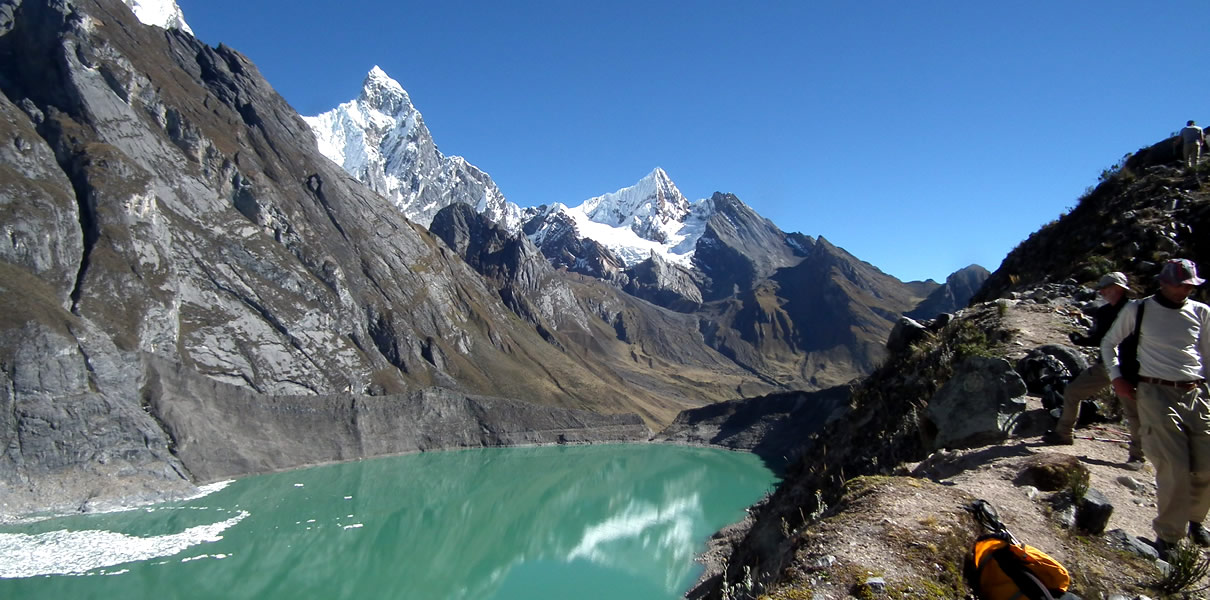Why are Cordillera Huayhuash Mountains So Prominent?
Rising Titans: Unveiling the Mystique of Cordillera Huayhuash's Prominence
Cordillera Huayhuash Mountains

Nestled within the rugged embrace of the Andes in Peru, the Cordillera Huayhuash Mountains stand as a testament to nature’s grandeur and geological wonder. Stretching across the regions of Ancash, Lima, and Huánuco, this majestic mountain range has captured the imagination of adventurers, scientists, and nature enthusiasts alike. In this comprehensive exploration, we delve into the factors that make the Cordillera Huayhuash Mountains so prominent, from their towering peaks to their rich biodiversity and cultural significance.
Geological Formation:
The Cordillera Huayhuash Mountains owe their prominence to a complex interplay of geological forces that have shaped the Andean landscape over millions of years. The Andes, one of the world’s longest mountain ranges, were formed through the process of plate tectonics, where the Nazca Plate subducted beneath the South American Plate, leading to the uplift of the Andean Cordillera.
The Cordillera Huayhuash is situated within the broader context of the Andean orogeny, a period of intense mountain-building that began around 200 million years ago and continues to this day. The collision of tectonic plates, combined with volcanic activity and erosion, has sculpted the rugged peaks and deep valleys that define the landscape of the Cordillera Huayhuash.
Towering Peaks:
At the heart of the Cordillera Huayhuash Mountains are its towering peaks, which rise to heights of over 6,000 meters above sea level. Among the most prominent peaks are Yerupajá, the second-highest peak in Peru, and Siula Grande, made famous by Joe Simpson’s harrowing tale in the book “Touching the Void.”
These towering summits, sculpted by the forces of erosion and glaciation, command attention and inspire awe in all who behold them. Their sheer scale and majesty serve as a testament to the geological forces that have shaped the Andes over millions of years.
Glacial Legacy:
Another defining feature of the Cordillera Huayhuash Mountains is their rich glacial legacy. The mountain range is home to numerous glaciers, which have carved deep valleys and sculpted the landscape over millennia. These glaciers serve as a vital source of freshwater for surrounding ecosystems and communities, feeding rivers and streams that sustain life in the Andean region. Just as we know Why are Insular Mountains So Prominent?
However, like many mountain ranges around the world, the Cordillera Huayhuash glaciers are under threat from climate change. Rising temperatures have led to accelerated melting and retreat of glaciers, posing challenges for local communities and ecosystems that depend on them for water resources.
Biodiversity Hotspot:
In addition to their geological significance, the Cordillera Huayhuash Mountains are also recognized for their rich biodiversity. The diverse range of habitats found within the mountain range, from high-altitude grasslands to Andean forests, supports a wide variety of plant and animal species.
The Cordillera Huayhuash is home to several endemic species, found nowhere else on Earth, as well as iconic Andean wildlife such as the Andean condor, vicuña, and spectacled bear. The region’s unique combination of elevation, climate, and habitat diversity makes it a hotspot for biodiversity and a priority for conservation efforts.
Cultural Significance:
Beyond their geological and ecological importance, the Cordillera Huayhuash Mountains hold cultural significance for the indigenous peoples of the Andes. For centuries, these mountains have been revered as sacred places, imbued with spiritual significance and cultural heritage.
The Quechua and other indigenous communities who call the Andes home have long held a deep connection to the mountains, viewing them as guardians of the land and sources of life-giving energy. Traditional practices such as mountain worship and offerings continue to be observed in the Andean region, honoring the ancient bond between humans and the natural world.
Conclusion:
In conclusion, the Cordillera Huayhuash Mountains stand as a prominent symbol of nature’s power and beauty in the Andes of Peru. From their towering peaks to their rich biodiversity and cultural significance, these mountains embody the geological, ecological, and spiritual forces that have shaped the Andean landscape for millennia.
As we marvel at the majesty of the Cordillera Huayhuash, let us also reflect on the importance of preserving and protecting these natural wonders for future generations. By understanding and appreciating the unique qualities of the Cordillera Huayhuash Mountains, we can ensure that they continue to inspire awe and wonder for centuries to come.
Know More about Cordillera Huayhuash Mountains.
What Are The Tourist Places Nearest to Cordillera Huayhuash Mountains?
When Were Cordillera Huayhuash Mountains Formed?
Where Are Cordillera Huayhuash Mountains Located?
Who Discovered Cordillera Huayhuash Mountains?
How to Reach Cordillera Huayhuash Mountains?




